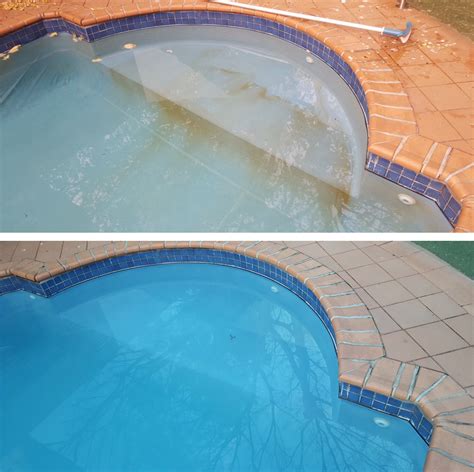The Simple Solution to Copper-Stained Pool Water
Copper staining in your pool is an unsightly problem, turning your sparkling blue oasis into a murky, green-tinged mess. But don't despair! While the sight of copper-stained water can be alarming, the solution is often simpler than you might think. This article will delve into the causes of copper staining, explain how to identify it, and provide straightforward solutions to restore your pool's crystal-clear beauty. We'll also tackle some frequently asked questions to ensure you have a complete understanding of this common pool problem.
Understanding Copper Staining: What Causes It?
Copper in your pool water typically stems from one of two sources: copper algaecides or corrosion of copper components.
-
Copper Algaecides: These are effective algaecides, but overuse or improper application can lead to an excess of copper ions in the water. This excess copper then reacts with other chemicals and pool surfaces, resulting in staining.
-
Copper Components: If your pool has copper pipes, fittings, or a copper heat exchanger, corrosion can release copper into the water. This is more likely to occur if the pH is unbalanced or if the water is overly corrosive.
Identifying Copper Staining: It's More Than Just Green
Copper staining isn't always a bright, obvious green. It can manifest in various shades, including:
- Light green to turquoise: This is often an early indicator of copper buildup.
- Dark green to brown: Indicates a more significant copper concentration.
- Black or dark brown stains: These are often found on pool surfaces like plaster, tile, and vinyl liners. These stains are extremely stubborn and require more aggressive treatment.
How to Remove Copper Stains: A Step-by-Step Guide
The best approach depends on the severity of the staining. For mild staining, a simple chelating agent can often do the trick. For more severe stains, more intensive methods may be necessary.
1. Test Your Water: Before attempting any treatment, accurately test your pool water’s pH, alkalinity, and copper levels. This ensures you address the root cause and prevents further staining.
2. Use a Chelating Agent: A chelating agent, often containing EDTA (ethylenediaminetetraacetic acid), is specifically designed to bind with copper ions, making them less reactive and easier to filter out. Follow the product instructions carefully, paying close attention to dosage.
3. Circulate Your Pool: After adding the chelating agent, run your pool's filtration system for at least 24 hours to allow the chelating agent to work its magic and remove the copper-bound particles.
4. Backwash Your Filter: After the 24-hour circulation period, backwash your filter to remove the trapped copper and debris.
What if Chelation Doesn't Work?
For stubborn stains that resist chelation, you may need to consider more aggressive methods:
-
Acid Wash (for plaster pools ONLY): This involves using a specific acid solution to dissolve the stains. This is a highly corrosive process and should only be performed by a professional pool service technician.
-
Stain Removal Products: Several specialized stain removal products are available for various pool surfaces. Carefully select a product compatible with your pool's surface material (plaster, tile, vinyl) and follow the manufacturer's instructions precisely.
Frequently Asked Questions (FAQs)
How can I prevent copper staining in the future?
Regular water testing and balancing of pH and alkalinity are key to preventing copper staining. Avoid overusing copper algaecides, and if using them, follow the instructions carefully. Inspect your pool's plumbing regularly for leaks or corrosion.
Can I use household chemicals to remove copper stains?
It's strongly discouraged. Household chemicals can damage your pool's surface and potentially harm pool equipment. Use only products specifically designed for pool stain removal.
Is copper staining harmful to swimmers?
While unlikely to cause serious harm, prolonged exposure to high copper levels in pool water can irritate skin and eyes. Addressing copper staining promptly is important for the health and comfort of swimmers.
How often should I test my pool water?
Ideally, you should test your pool water at least once a week to monitor its chemical balance and prevent problems like copper staining.
By following these steps and understanding the causes of copper staining, you can quickly and effectively restore your pool's sparkling clarity and enjoy its beauty once again. Remember, prevention is key! Regular water testing and maintenance are your best defense against this common pool problem.

